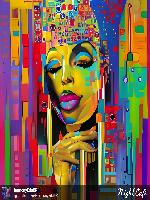

Event Information
Based on 90-minute interactive session (similar to Innovation Lab last year)
1. Introduction & Overview (10 minutes)
Content: Brief introduction to the session, presenters, and the importance of XR tools in green apprenticeships, with a focus on inclusivity and diversity.
Engagement: Polling audience about their experience with XR and culturally relevant practices. Using live polling tools (e.g., Slido) for instant feedback.
Time: 10 minutes
Process: Polling, live Q&A to gauge participants' familiarity with XR tools and green workforce development.
2. Culturally Relevant Green Apprenticeships (15 minutes)
Content: Presentation on how culturally relevant pedagogy and diverse subject matter experts are integrated into green apprenticeships.
Engagement: Discussion on participants’ own teaching or program designs. Breakout into small groups to brainstorm ways to make green apprenticeships culturally inclusive.
Time: 15 minutes
Process: Group discussion, peer-to-peer interaction. Small group brainstorm and feedback session shared with the larger group.
3. Let's have FUN: Exploring XR Platforms (20 minutes)
Content: Demonstration of various XR platforms (VR/AR) such as BodySwaps VR, Interplay Learning VR, and their application in green career pathways.
Engagement: Hands-on demos with devices (if available) or virtual walkthroughs via videos/screenshares. Participants will navigate an AR/VR environment.
Time: 20 minutes
Process: Device-based activities, hands-on experience with XR tools, interactive Q&A during the demo.
4. Designing an Inclusive, Hybrid Curriculum (15 minutes)
Content: Walkthrough of the hybrid curriculum design for green apprenticeships, including mentorship, project-based learning, and integration of subject matter experts.
Engagement: Participants will draft a brief outline of a lesson plan incorporating XR tools and culturally relevant practices. Real-time sharing .
Time: 15 minutes
Process: Hands-on activity (drafting lesson plans), peer feedback using collaborative tools.
5. Presenter Perspectives & Case Studies (15 minutes)
Content: Presenters share case studies of successful inclusive green apprenticeships, highlighting experiences from diverse backgrounds, including disabilities and workforce development.
Engagement: Open floor for participants to ask specific questions about challenges in implementing similar programs.
Time: 15 minutes
Process: Storytelling, case study review, interactive Q&A.
6. Interactive Collaboration & Problem-Solving (10 minutes)
Content: Participants collaborate to solve a challenge related to scaling green apprenticeships using XR tools while maintaining inclusivity.
Engagement: Group activity – participants are divided into teams, provided a challenge, and tasked with brainstorming a solution. Solutions will be shared with the full group.
Time: 10 minutes
Process: Problem-solving in groups, collaborative solution-sharing.
7. Closing & Key Takeaways (5 minutes)
Content: Recap of session objectives and key insights from the discussions and activities.
Engagement: Participants are asked to share one takeaway or actionable step they plan to implement.
Time: 5 minutes
Process: Audience reflections shared via chat or live feedback tools.
Total Time: 90 minutes
This session balances presentations with interactive, hands-on activities and peer collaboration, ensuring that participants are engaged throughout and leave with practical, implementable strategies.
Updated research from my disseration will be available via QR code on printed and digital material for the conference.
Here is relevant resources:
Convergence of Wisdom and Technology
Capra, F. (1996). The Web of Life: A New Scientific Understanding of Living Systems. Anchor.
Kelly, K. (2010). What Technology Wants. Viking.
Challenges in Modern Education
Darling-Hammond, L. (2017). Teacher Education around the World: What Can We Learn from International Practice? European Journal of Teacher Education, 40(3), 291-309.
OECD. (2019). PISA 2018 Results (Volume III): What School Life Means for Students' Lives. OECD Publishing.
Technology Interventions
Bailenson, J. N. (2018). Experience on Demand: What Virtual Reality Is, How It Works, and What It Can Do. W.W. Norton & Company. New York, NY.
Frehlich, C. (2020). Immersive Learning: A practical guide to virtual reality's superpowers in education. Rowman & Littlefield. Lanham, MD.
Gilbert, R.M. (2019). Inclusive Desgin for a Digital World: Designing with Accessibility in Mind. Apress. New York, NY.
Johnson, L., Adams Becker, S., Estrada, V., and Freeman, A. (2015). NMC Horizon Report: 2015 K-12 Edition. The New Media Consortium.
Deterding, S., Dixon, D., Khaled, R., and Nacke, L. (2011). From Game Design Elements to Gamefulness: Defining "Gamification." In Proceedings of the 15th International Academic MindTrek Conference: Envisioning Future Media Environments (pp. 9-15).
Instructional Activities and Strategies
Chardin, M., Novak, K. (2021) Equity by Design: delivering on the power and promise of UDL. Corwin Press. Thousand Oaks, CA.
Thomas, D., and Brown, J. S. (2011). A New Culture of Learning: Cultivating the Imagination for a World of Constant Change. CreateSpace Independent Publishing Platform.
Blended Learning Universe. (2018). Blended Learning Definitions and Models.
Evidence of Success
Hattie, J. (2009). Visible Learning: A Synthesis of Over 800 Meta-Analyses Relating to Achievement. Routledge.
Pardo, A., and Siemens, G. (2014). Ethical and Privacy Principles for Learning Analytics. British Journal of Educational Technology, 45(3), 438-450.
Empowering Educators
International Society for Technology in Education (ISTE). (2020). ISTE Standards for Educators.
Siemens, G., and Long, P. (2011). Penetrating the Fog: Analytics in Learning and Education. EDUCAUSE Review, 46(5), 30-32.
Student Engagement Strategies
Gee, J. P. (2007). What Video Games Have to Teach Us about Learning and Literacy. Palgrave Macmillan.
Anderson, C. A., and Dill, K. E. (2000). Video Games and Aggressive Thoughts, Feelings, and Behavior in the Laboratory and in Life. Journal of Personality and Social Psychology, 78(4), 772-790.
Community Building
Wenger, E., McDermott, R., and Snyder, W. M. (2002). Cultivating Communities of Practice: A Guide to Managing Knowledge. Harvard Business Press.
Facebook. (2021). Facebook Groups: A Guide for Educators.



We will provide 2 AR headsets if not available from conference support.